Food Forward: Michael Burton & Michiko Nitta
15 January - 1 April 2012Location: Hogewal 1-9, The Hague
Main page Food Forward: click here
Michael Burton and Michiko Nitta's project The Feast After Agri is a collaborative investigation into future evolutions to our food systems. They ask what new Cultural Revolution will replace agriculture and how will our species and civilization will be transformed?
Just as agriculture catalyzed human development 10,000 years ago, The Feast After Agri proposes new food cultures to revolutionize the way we feed ourselves. These are created in reaction to emerging science and technology to develop alternative ways to fuel the body. They explore and reveal a complex history and future.
The Food and Agriculture Organization of the United Nations estimates the world population will grow to 9 billion by 2050. To accommodate this growth, they warn that the world will have to nearly double its current output of food. In reaction, After Agri urges us to make dramatic changes to sustain such a large population in a changing world. It investigates how our bodies, behavior, society, culture, landscape and planet might be reconsidered.
For Food Forward, Nitta and Burton explore two of the seven future food cultures from The Feast After Agri in greater depth: Algaculture and the Republic of Salivation.
Algaculture designs a new symbiotic relationship between humans and algae. It proposes a future where humans will be enhanced with algae living inside new bodily organs, allowing us to be semi-photosynthetic. Almost enabling us to become plant-like by gaining food from light. As such, we will be symbionts (meaning that both entities entirely depend on each other for survival), entering into a mutually beneficial relationship with the algae.
This scenario is, among other sources, inspired by the work of scientists Debora MacKenzie and Michael Le Page who wrote about photosynthetic creatures, or what they call "plantimals" in the New Scientist (2010). Such photosynthetic organisms currently include lichen, sea slugs and salamanders that welcome algae into their bodies, in a partnership called endosymbiosis.
The Algaculture installation at Stroom will create a vision of the integration of algae into our bodies. Visitors will enter a Solarium from the future where people go to feed for enjoyment and get access to light.
The Republic of Salivation starts with the food shortages and famine we will face in the future. Governments will be forced to ration food through restricted food policies to ensure that everyone is fed and to control social unrest. It creates a future where inhabitants of the city are allocated a quota of food according to their employment. The type of food they receive is carefully designed to the emotional, intellectual and physical demands of their job.
The exhibited piece explores an industrial worker's diet that is largely designed on modified starch, enabling the body to work for longer on fewer nutrients.
Alongside exploring the possibility of a government controlled food supply, the Republic of Salivation also investigates the biological reaction to a mono-diet. The scientific study of nutrigenomics has found that the more starch we eat (such as through bread or potatoes), the more enzyme called Amylase to convert starch to sugar, is found in saliva. The worker in the scenario presented at Stroom, uses the advantage of a high starch diet to allow him to create alcohol illegally from his increased saliva production. The amylase enzyme found in saliva being used in industrial alcohol production to create sugar from starch to feed yeast.
Actor featuring in Algaculture: Noah Young
Special thanks to: Jon Ardern, Matt Heath, Martin Blum
More info on The Feast After Agri:
www.afteragri.co.uk

Michael Burton & Michiko Nitta, Republic of Salivation
photo: Rob Kollaard, courtesy Stroom Den Haag
photo: Rob Kollaard, courtesy Stroom Den Haag
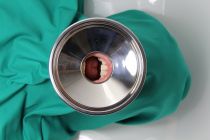
Michael Burton & Michiko Nitta, Republic of Salivation
photo: courtesy the artists
photo: courtesy the artists

Michael Burton & Michiko Nitta, Republic of Salivation
photo: Rob Kollaard, courtesy Stroom Den Haag
photo: Rob Kollaard, courtesy Stroom Den Haag
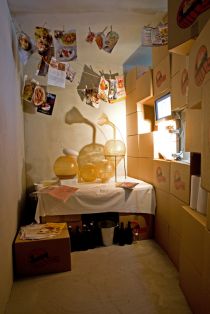
Michael Burton & Michiko Nitta, Republic of Salivation
photo: Rob Kollaard, courtesy Stroom Den Haag
photo: Rob Kollaard, courtesy Stroom Den Haag
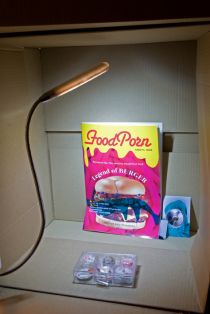
Michael Burton & Michiko Nitta, Republic of Salivation
photo: Rob Kollaard, courtesy Stroom Den Haag
photo: Rob Kollaard, courtesy Stroom Den Haag

Michael Burton & Michiko Nitta, Republic of Salivation
photo: Rob Kollaard, courtesy Stroom Den Haag
photo: Rob Kollaard, courtesy Stroom Den Haag
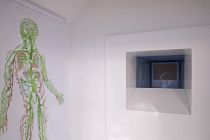
Michael Burton & Michiko Nitta, Algaculture
photo: Rob Kollaard, courtesy Stroom Den Haag
photo: Rob Kollaard, courtesy Stroom Den Haag
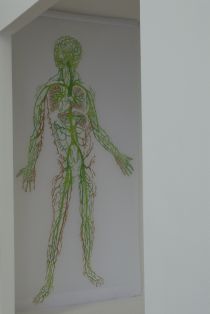
Michael Burton & Michiko Nitta, Algaculture
photo: Rob Kollaard, courtesy Stroom Den Haag
photo: Rob Kollaard, courtesy Stroom Den Haag
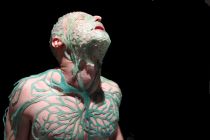
Michael Burton & Michiko Nitta, Algaculture
photo: courtesy the artists
photo: courtesy the artists
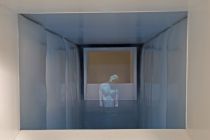
Michael Burton & Michiko Nitta, Algaculture
photo: Rob Kollaard, courtesy Stroom Den Haag
photo: Rob Kollaard, courtesy Stroom Den Haag

Michael Burton & Michiko Nitta, Algaculture, early works
photo: courtesy the artists
photo: courtesy the artists
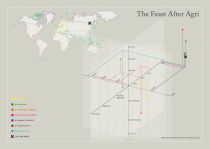
Michael Burton & Michiko Nitta, The Feast After Agri
photo: courtesy the artists
photo: courtesy the artists

















